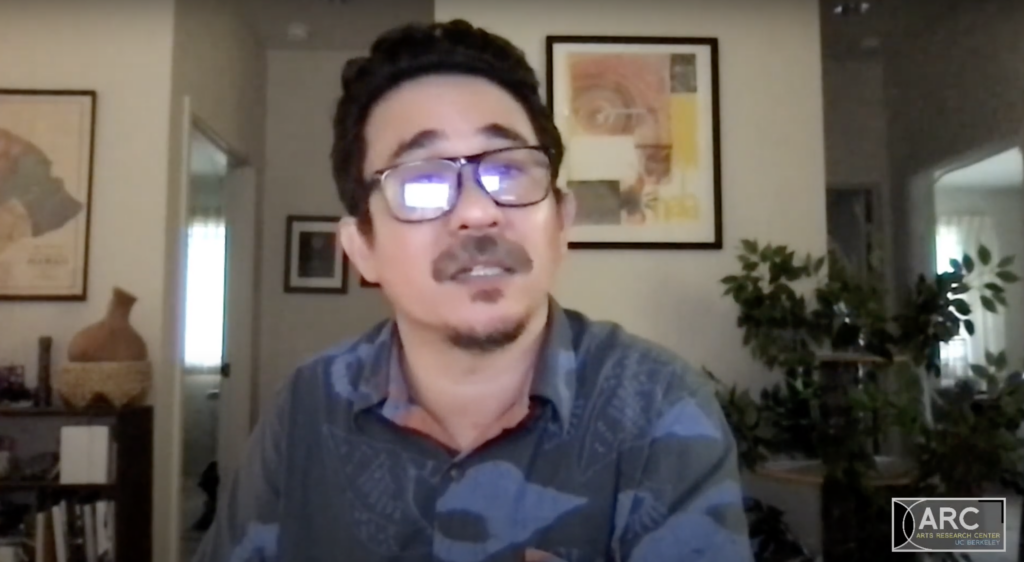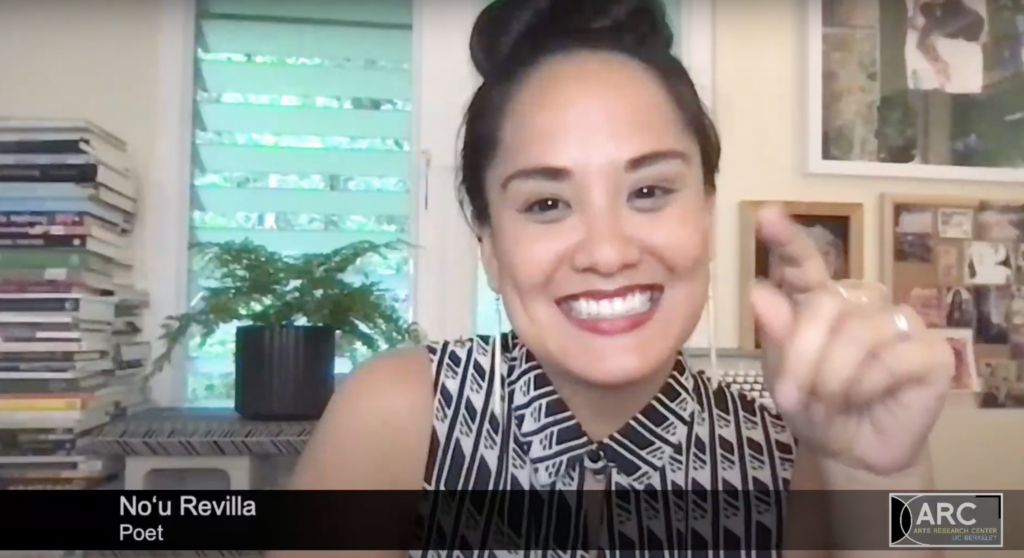How is nature poetic? How can Indigenous languages create a new sense of intimacy with one’s environment? On Thursday, March 23rd, three Hawaiian poets came together with author and professor Dr. Craig Santos Perez to explore these questions through a reading of their work. Featuring D. Kealiʻi Mackenzie, Donovan Kūhiō Colleps, and Noʻu Revilla, the three poets drew from similar wells of experience but imbued their poems with distinct styles and voices. To use Perez’ words, Mackenzie explores “the intimacy of our ecologies that we are all a part of and we can touch, [moving] beyond the borders and things that separate us,” while Colleps finds “the connections between land, language, and culture,” and Revilla works with “the erotics of language.” The connection between the poets was palpable, their language rich and moving.
Water plays a central role in each of the poets’ works, as a symbol of resilience, and a wild, powerful, grounding force. D. Kealiʻi Mackenzie, a queer poet of Kanaka ‘Ōiwi, European, and Chinese descent, was the first to read. Drawing from his 2018 chapbook, From Hunger to Prayer (Silver Needle Press), he began with “Kanaloa ‘ai Moku,” a dedication to Kanaloa, the Hawaiian deity of the ocean. The water is sacred to the poem’s speaker—“I asked for permission before I touched the waters at Piha, felt cold, ocean stained mud”—and yet unpredictable: “my God, what will become of us once your appetite is satiated?” To Mackenzie, water is vast and untamed compared to humanity.

Mackenzie leans into this sense of lore and legacy in his work, drawing from old tales and legends, incorporating them into a contemporary experience of Hawaii. In “Legacies,” he explores how colonialism has damaged Native ways of being through the imposition of a “whole structure crafted on dispossession.” Mackenzie deftly uses small details to tell a much larger story: “Our skin accustomed to the gentle fern-bending wind, turned itchy and overheated in an attempt at civilized Christian clothes.” Colonialism reaches deep into the self, beyond clothing or customs, but into “the body and its joys.” Toeing the line between the supernatural and the real, Mackenzie’s poetry is not confined to any rules, distinctly fluid.

Donovan Kūhiō Colleps, a Kanaka ʻŌiwi poet and editor, read from the collection he’s currently working on, titled Signs of Care. Focused on his kupuna, or elder ancestors, Colleps writes from the site of his grandparents’ deaths, using their physical absence as an impetus for preserving their memory. His first poem, “Kissing the Opelu,” is dedicated to his late grandmother. Using natural imagery, Colleps maps the interconnectedness between himself, his grandmother, and the natural environment: “I am water only because you are the ocean. We are here only because old leaves have been falling. A mulching of memories folding into buried hands.” Like layers of leaves disintegrating into each other, Colleps’s poetry creates its own temporality, drawing from the recent past, the present, and the ancient, the natural and the relational, to create intricately woven lines that make language feel physical. Like Mackenzie’s poetry, boundaries are blurred—there are no rules for what is possible on the page. In “Kāhulu,” Colleps plays with the double denotations of the word, referring to both “adjective” and “feather”—in what way do the two meanings intersect and interact? “Our kupuna put feathers on our words and the rain beads,” he writes, “And we glide, rising and diving, piercing sea skin.” Colleps’ words feather out into multiple interpretations, open, free, and beautiful.
Noʻu Revilla, an ʻŌiwi poet and educator, began her reading by expressing gratitude for her ancestry: “we don’t have to go far for inspiration. Our aina (land), our ancestral knowledges, our lived experiences are valid sources of knowledge.” Allowing her fellow panelists to guide her reading, Revilla began with her poem “Welcome to the Gut House,” a visceral piece that lets “Only guts” spill out on the page. Revilla sinks into her language, pausing to allow each word to have its effect. Her presence as a reader came through. Revilla’s poetry is erotic in the sense that it is not afraid of the body. In “iwi hilo means thigh bone” she writes: “Be history or tell me a feel of it now / Or we’re so deep inside me / Till I was never thigh bone.” The body becomes a site of history, a point of reconciliation with the past, the tangible remnants of her ancestry. Like Mackenzie and Colleps, water is a motif: “The ocean is really irreconcilable. The ocean is really that guardian to kill your guardian of fear. The ocean is real.” Like a wave, Revilla’s poetry swells with emotion and gravity.

In the discussion led by Perez, the panelists discussed the relationship between their Indigenous Hawaiian identities and their writing, as well as how their native tongues are incorporated into their work. While Mackenzie uses poetry as a way to clear what’s “percolating in [his] mind,” Revilla interacts with the relationship between the reader and the writer, working against it being an “extractive performance” but rather “[making] story with you.” Colleps sees the page as “an excavation of things that happened under [his] grandfather and [his] story,” a way to extend beyond the bounds of time. Like the doubleness of the word “kāhulu,” these three poets handle heavy topics with incredible ease, communing with the natural, the bodily, and temporal in deep and personal ways.
